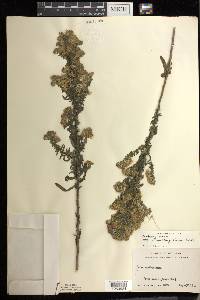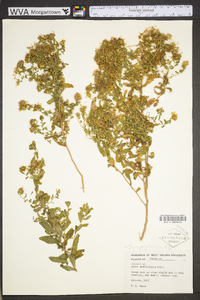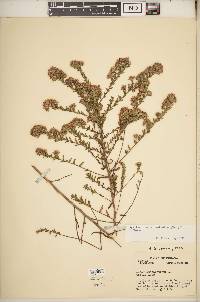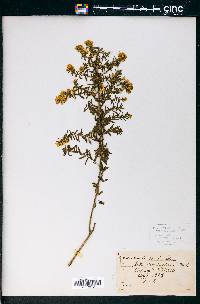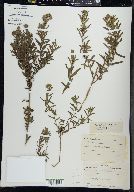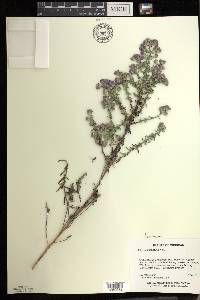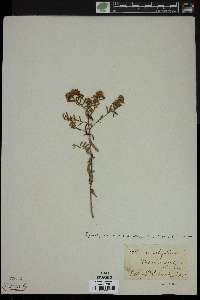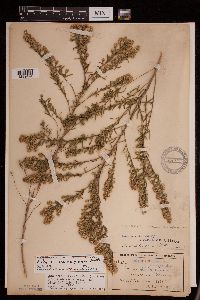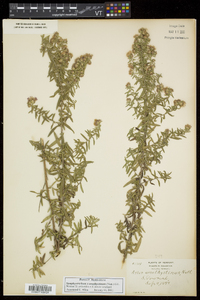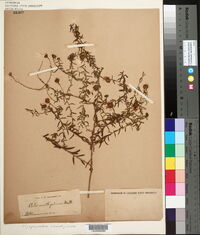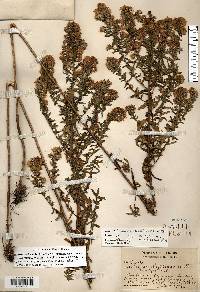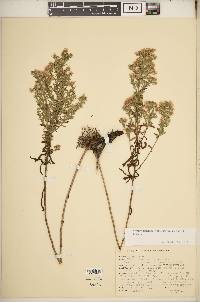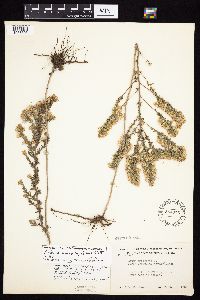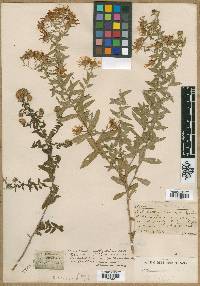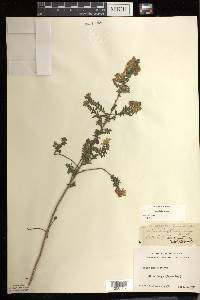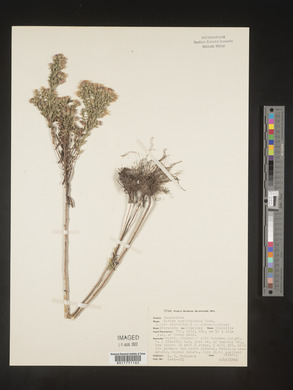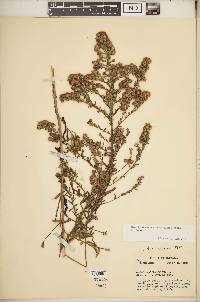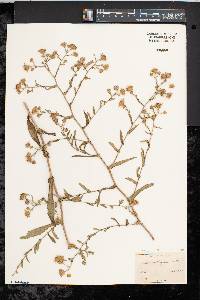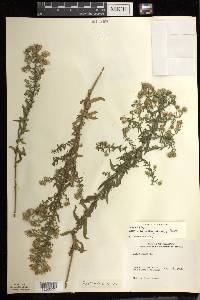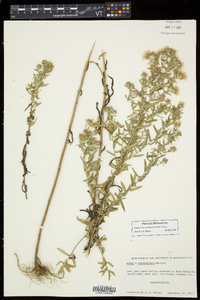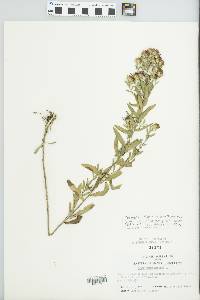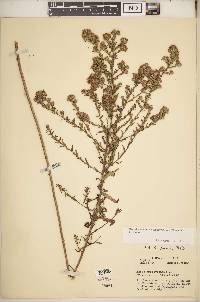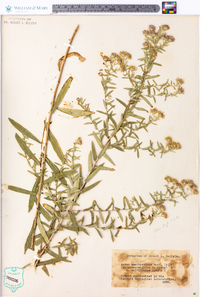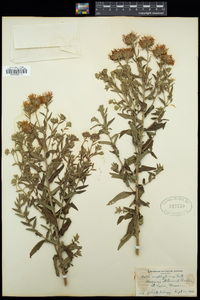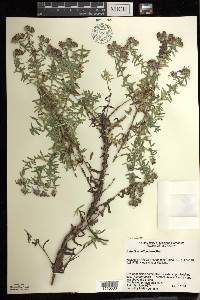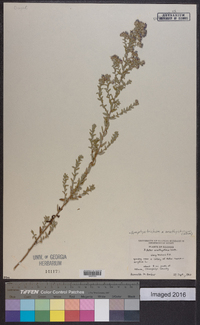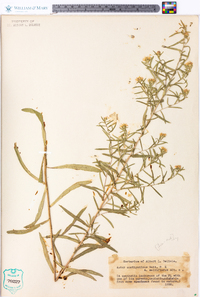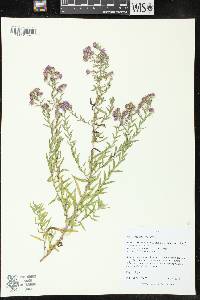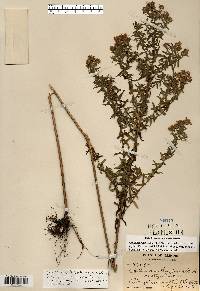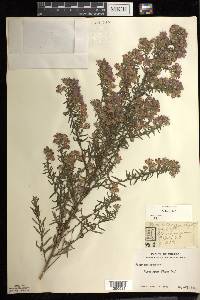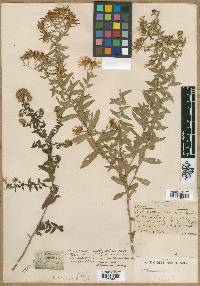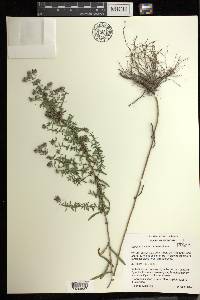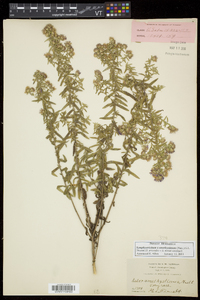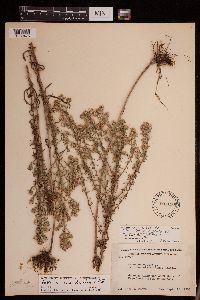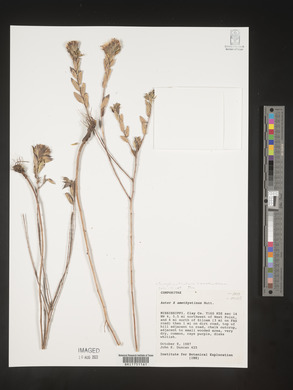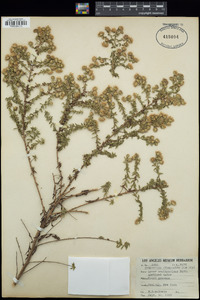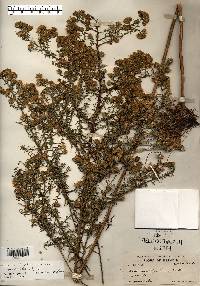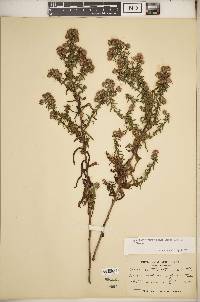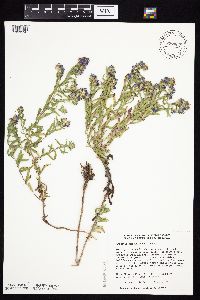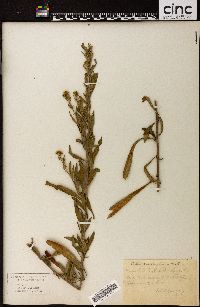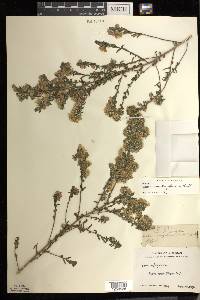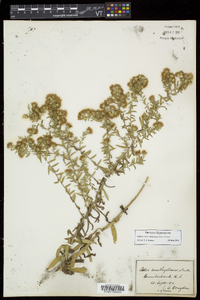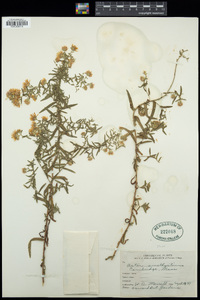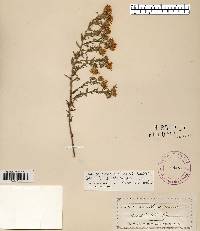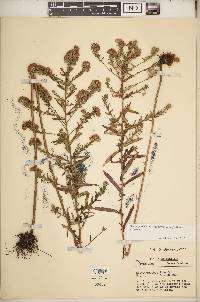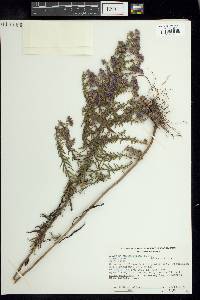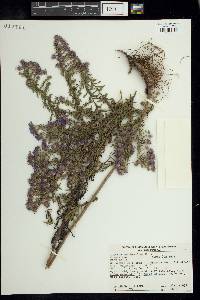
|
|
|
|
Family: Asteraceae
Hybrid Aster
[Aster amethystinus Nutt., moreSymphyotrichum amethystinum (Nutt.) G.L.Nesom, Symphyotrichum x amethystinum (Nutt.) G.L. Nesom [ericoides × novae-angliae]] |
Perennials, cespitose, 30-120 cm; with thick, woody, short-branched caudices at ends of fleshy rhizomes. Stems 1-5+, erect (light brown to grayish brown), densely hispidulo-hirsute. Leaves light green, thin to firm; basal withering by flowering, sessile, blades oblanceolate, 10-40 × 3-10 mm, attenuate, margins usually entire, rarely remotely serrate, piloso-ciliate, apices obtuse, rounded to mucronulate, faces sparsely to moderately strigose; proximal cauline sometimes persistent by flowering, sessile, blades linear or oblong to elliptic-oblanceolate, 40-60 × 3-10 mm, bases rounded or slightly clasping, margins entire, scabrous, apices acute to obtuse, faces ± copiously hirsute; distal sessile, blades oblanceolate, 15-45 × 2-3(-4.5) mm, progressively reduced distally, bases cuneate, margins entire, apices acute, white-spine-tipped, faces sparsely strigose. Heads in ample, leafy, paniculiform arrays, branches ascending, sometimes secund (heads often crowded). Peduncles hispid, bracts 1-3+, oblong-lanceolate, 3-5 mm, not grading into phyllaries. Involucres campanulate to hemispheric, 4-6 mm. Phyllaries in 3-5 series, linear-lanceolate, ± unequal to subequal, bases ± indurate, margins hyaline proximally, outer distally hispido-scabrous, green zones diamond-shaped, restricted to distal 1 / 2 - 1 / 4 , apices (outer) spreading to reflexed, acute, subspinulose, (inner) acuminate, purplish, faces (outer) scabroso-puberulent or strigose, eglandular, inner distally stipitate-glandular. Ray florets 20-35; corollas azure blue to violet or lavender, laminae 5-10 × 0.6-1.2 mm. Disc florets 20-30+; corollas light yellow turning pinkish to purple, 3-4 mm, tubes ca. 1 / 2 narrowly funnelform throats, lobes triangular, 0.5-0.7 mm, glabrous. Cypselae dull purple or brown, obovoid, not compressed, 1.5-2 mm, 7-9-nerved, faces densely sericeous; pappi tan to tawny, sometimes rose to violet-tinged, 3.5-5.5 mm. 2n = 10. Flowering Aug-Oct. Fields, prairies, disturbed grounds; 200-400 m; Ont.; Colo., Conn., Ill., Ind., Iowa, Ky., Md., Mass., Minn., Mo., Nebr., N.J., N.Y., N.Dak., Pa., R.I., Vt., Wash., Wis. Symphyotrichum ×amethystinum is the F 1 hybrid between S. ericoides and S. novae-angliae, encountered sometimes throughout the area where the two parental species co-occur. It is morphologically intermediate; it has non-spiny, sparsely stipitate-glandular phyllaries and rose-violet rays in mid-sized heads. Forma leucerythros Bemis and forma leucos Bemis have been described within this hybrid and may represent recombinants or normal population color variants.
|
This project was made possible in part by the Institute of Museum and Library Services [MG-70-19-0057-19].
Powered by Symbiota



